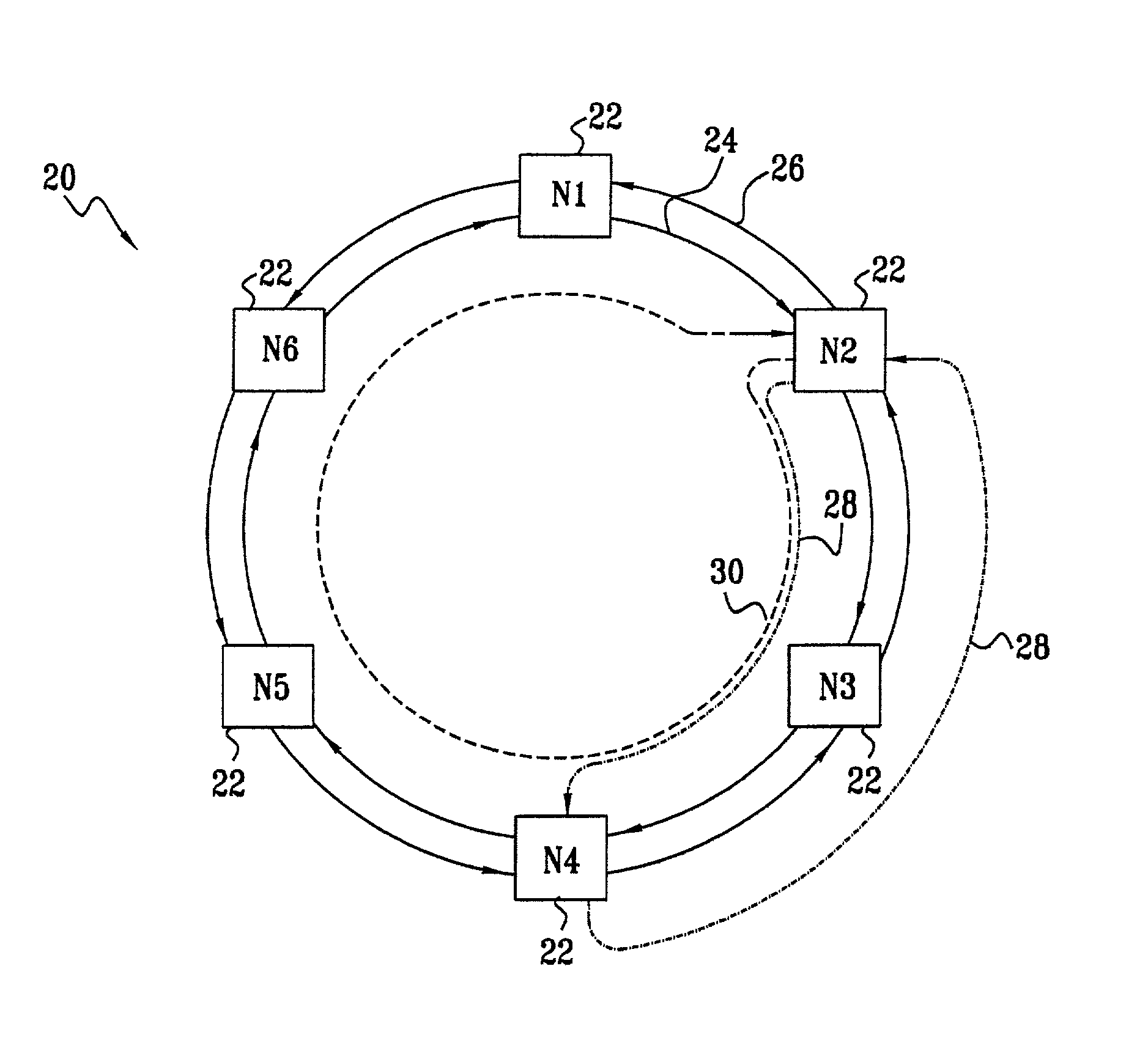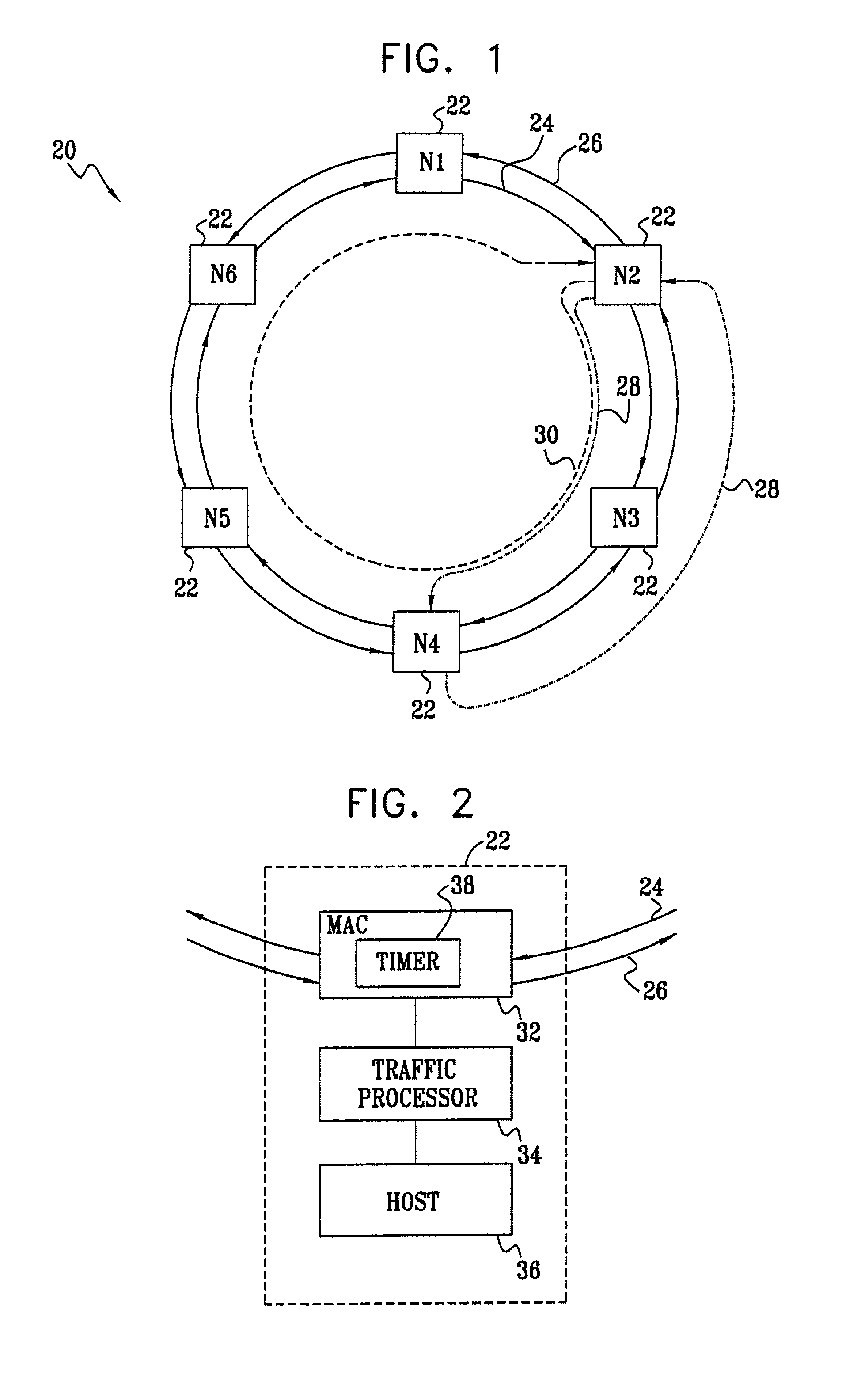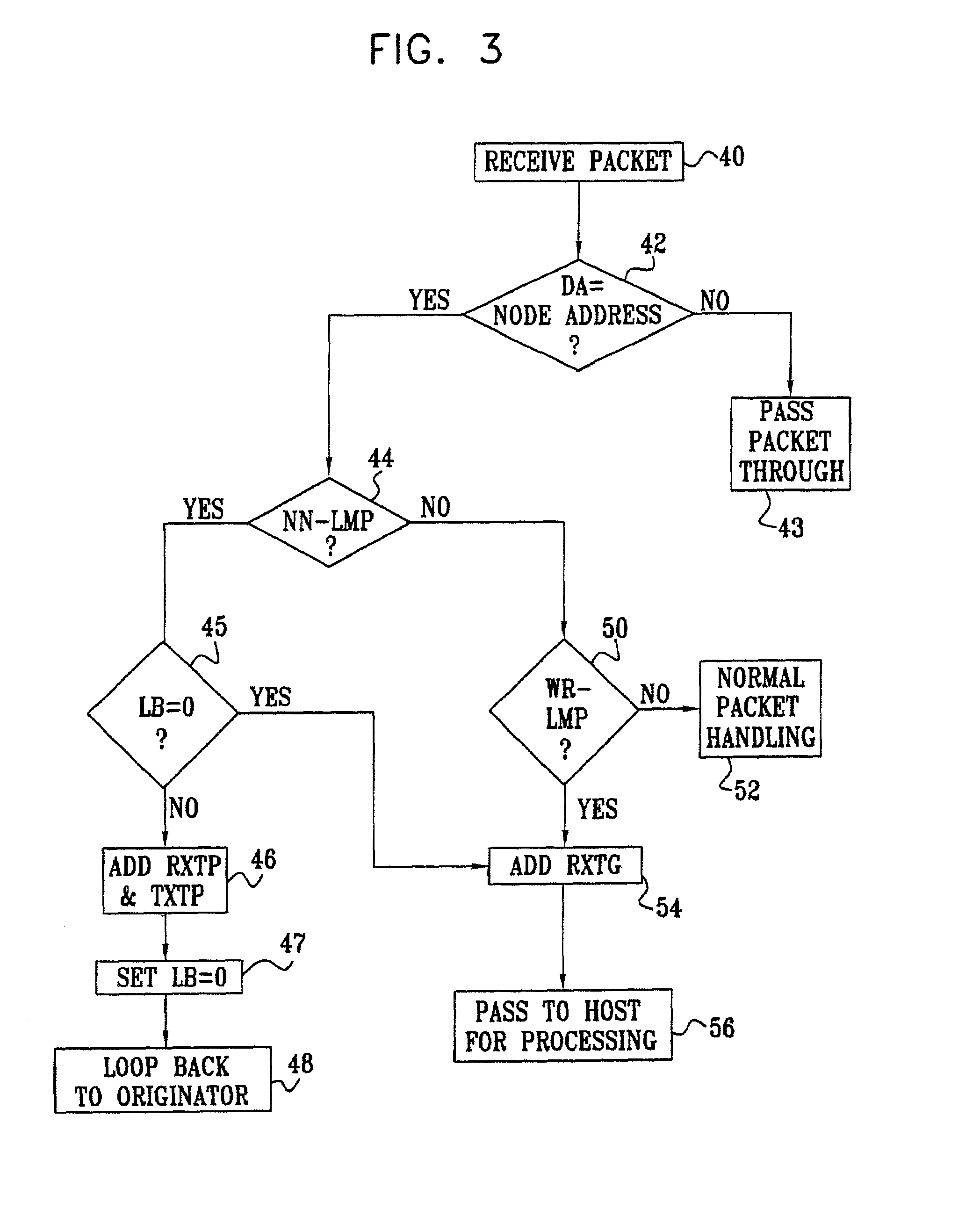Latency evaluation in a ring network
a ring network and latency evaluation technology, applied in the field of network communication systems and protocols, can solve the problems of costly hardware typically being added to the network, the network does not provide a means for measuring round-trip, node-to-node latency between a pair of nodes on the ring,
- Summary
- Abstract
- Description
- Claims
- Application Information
AI Technical Summary
Benefits of technology
Problems solved by technology
Method used
Image
Examples
Embodiment Construction
[0051]FIG. 1 is a block diagram that schematically shows a packet ring network 20, in accordance with a preferred embodiment of the present invention. Network 20 comprises nodes 22, marked N1 through N6, which are mutually connected by bidirectional communication media, such as optical fibers or conductive wires. The nodes typically comprise switching equipment, and serve as either access points or gateways to other networks (aggregation points). The communication media in network 22 are configured to define an inner ring 24, over which packets are conveyed between the nodes in a clockwise direction, and an outer ring 26, over which the packets are conveyed in a counterclockwise direction. As noted above, however, the designations of “inner,”“outer,”“clockwise” and “counterclockwise” are arbitrary and are used here simply for convenience and clarity of explanation. Furthermore, the designation and number of nodes in network 20 are chosen here by way of example, and the network may, ...
PUM
 Login to View More
Login to View More Abstract
Description
Claims
Application Information
 Login to View More
Login to View More - R&D
- Intellectual Property
- Life Sciences
- Materials
- Tech Scout
- Unparalleled Data Quality
- Higher Quality Content
- 60% Fewer Hallucinations
Browse by: Latest US Patents, China's latest patents, Technical Efficacy Thesaurus, Application Domain, Technology Topic, Popular Technical Reports.
© 2025 PatSnap. All rights reserved.Legal|Privacy policy|Modern Slavery Act Transparency Statement|Sitemap|About US| Contact US: help@patsnap.com



